We let .
Block diagram for reference:
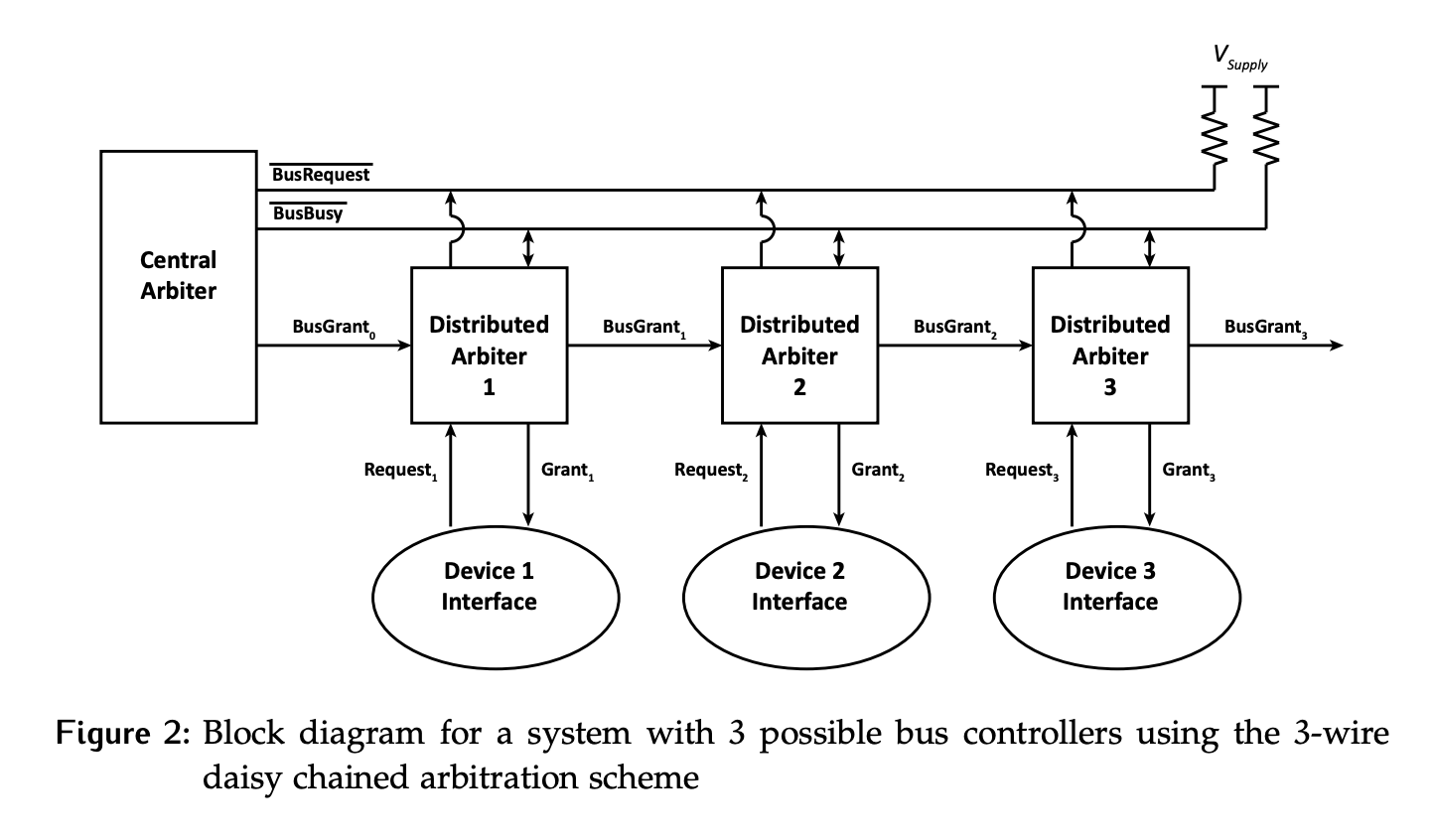
Initial state:

- Initially
/BusRequestand/BusBusyare high, which tells us that the bus is initially idle. Thus, we expect all of the grant signals to be low, which is in fact true for our initial state. - A good thing to look at right at the beginning is the
BusGrant3signal. This is an output of DA 3. Since our system only has 3 distributed arbiters and devices,BusGrant3goes off the end of the system since there is no 4th request to grant to. Thus, it is always low.
The first request occurs at 1 ns from Device 3. A request from Device 3 goes to DA 3, which acts on the request by pulling /BusRequest low. There is a request of 1 ns.

At 2 ns, the central arbiter sees that /BusRequest is low and /BusBusy is high, so someone is making a request and the bus is not currently in use. Thus, it will issue a bus grant/token , BusGrant0. This has a delay of 1 ns.
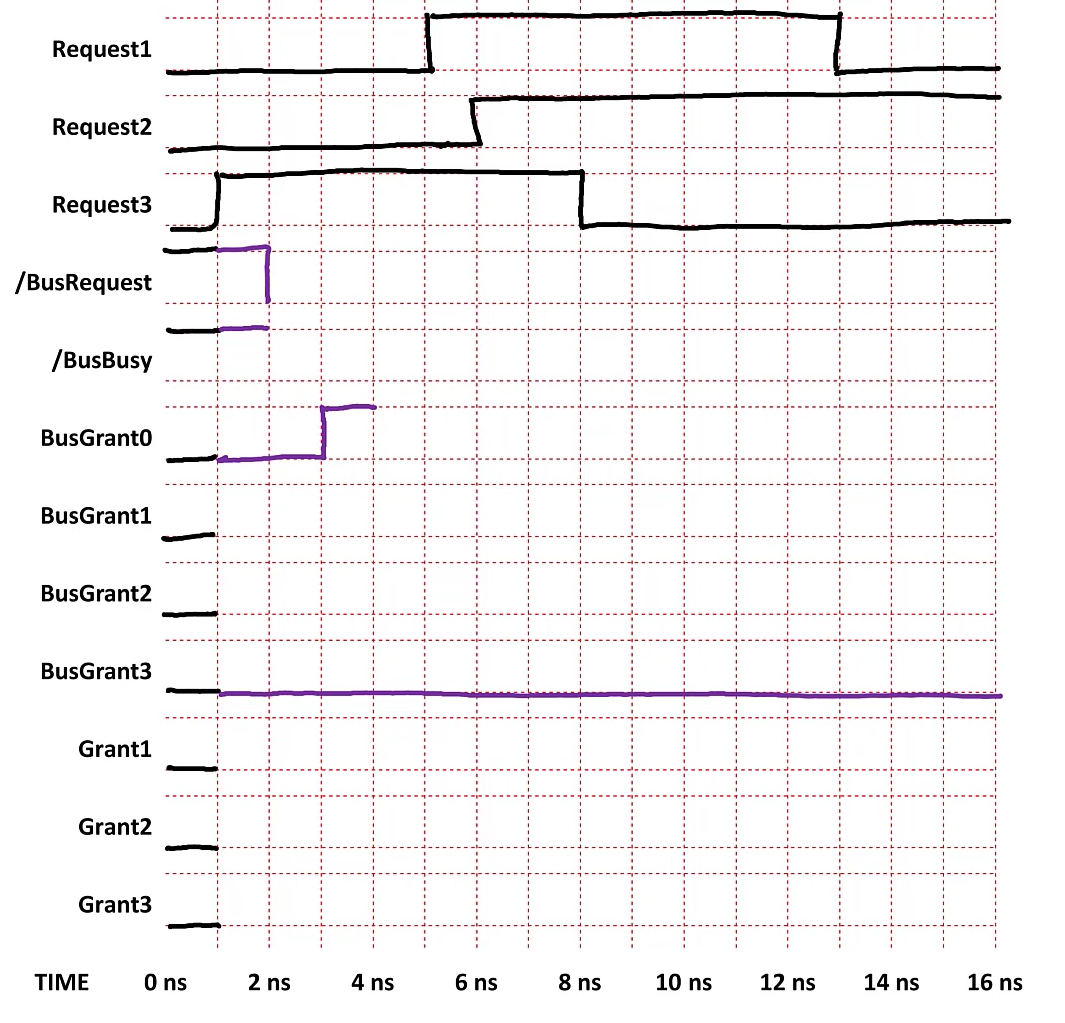
DA 1 will see the rising edge on BusGrant0, which is the token, and will check its local request line Request1. Since this is low, it will pass on the request to DA 2 but pulling BusGrant1 high. Similarly, DA 2 will see the rising edge on BusGrant1, check its local Request2, see that it’s not requesting anything, and pass on the token by pulling BusGrant2 high.

DA 3 will see BusGrant2 pulled high and look the status of its local request line Request3. It will see that it is indeed making a request since Request3 is high. Therefore, it can take control of the bus. Three things need to happen here:
/BusBusyneeds to be pulled low to show that we are taking control of the bus.- The local grant
Grant3needs to be pulled high to let the device know it can start using the bus.

/BusRequestneeds to be de-asserted. However, we need to check whether the other request lines are issuing requests. If other devices are making requests,/BusRequeststays low even if the current device is done with its request. In this case, Device 1 has an active request and Device 2 has started to make a request, so/BusRequestwill indeed stay low.
The /BusBusy signal going low means that the CA will see that the bus is in use, so it will de-assert the grant BusGrant0, which will cascade through the system to de-assert BusGrant1 and BusGrant2 as well.

Nothing else changes until Device 3 is done with the bus. This happens at 8 ns, signified by Request3 being pulled low. When the distributed arbiter sees this request go low, it will de-assert the local grant Grant3 (don’t forget that there’s a time delay ), telling the device it no longer has control of the bus. It will also de-assert /BusBusy so that other devices can begin using the bus.
Since device 3 never makes any more requests (Request is low for the rest of the time), we can fill in Grant3 as low for the rest of the time as well.

Going back to the central arbiter, we see that /BusBusy is high, so the bus not in use, and there is an active request since /BusRequest is low. This causes the central arbiter to issue a grant but setting BusGrant0 to high.

DA 1 will see BusGrant0, check its local request line, and see that it is indeed making a request. It will then:
- Issue the local grant
Grant1, one delay later. - Assert
/BusBusy. - De-assert
/BusRequest. However, since Device 2 is also making a request,/BusRequestis kept low, even though Device 1 is no longer actively driving it.
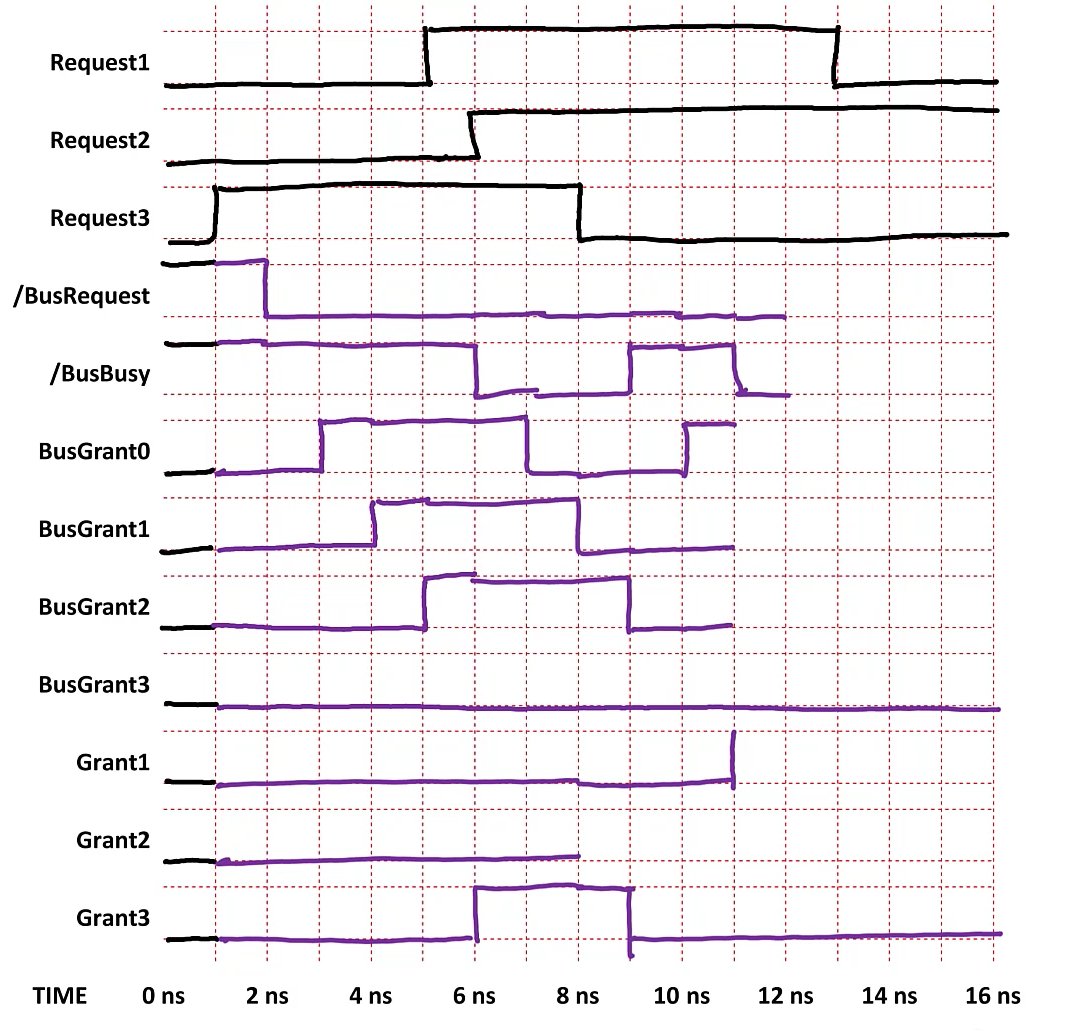
At the central arbiter, now that /BusBusy has gone low, the grant will need to be taken away, so BusGrant0 will also go low (one delay later). The grant only went down to Device 1, so it does not need to cascade any further down the chain.
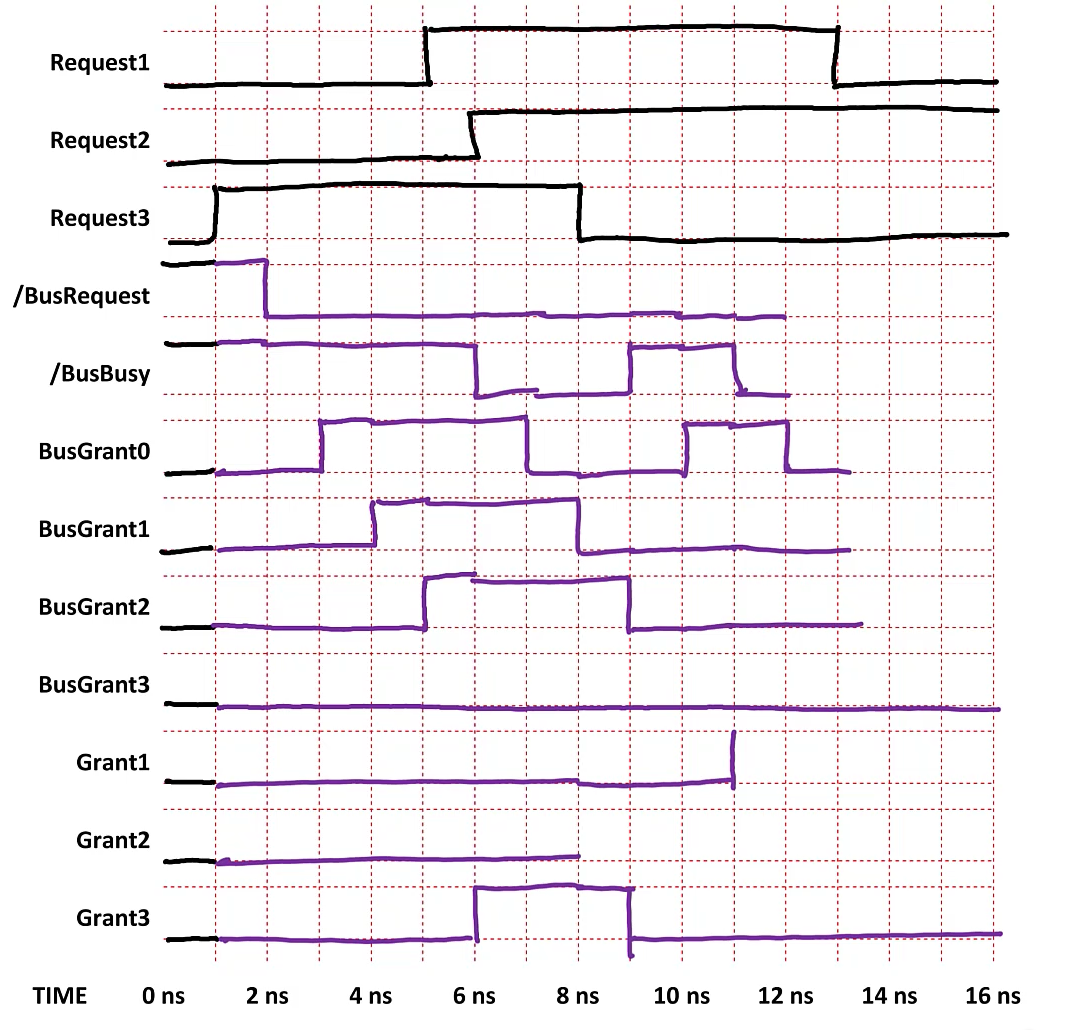
The grant at Device 1, Grant1, will remain high until one delay after Device 1 signals that it is done with the bus by de-asserting Request1. Request1 is de-asserted at ; so, at , Grant1 goes away. Device 1 makes no more requests for the rest of time so Grant1 stays low for the rest of time.
At the same time that DA 1 de-asserts Grant1, it also needs to de-assert /BusBusy by setting it high.
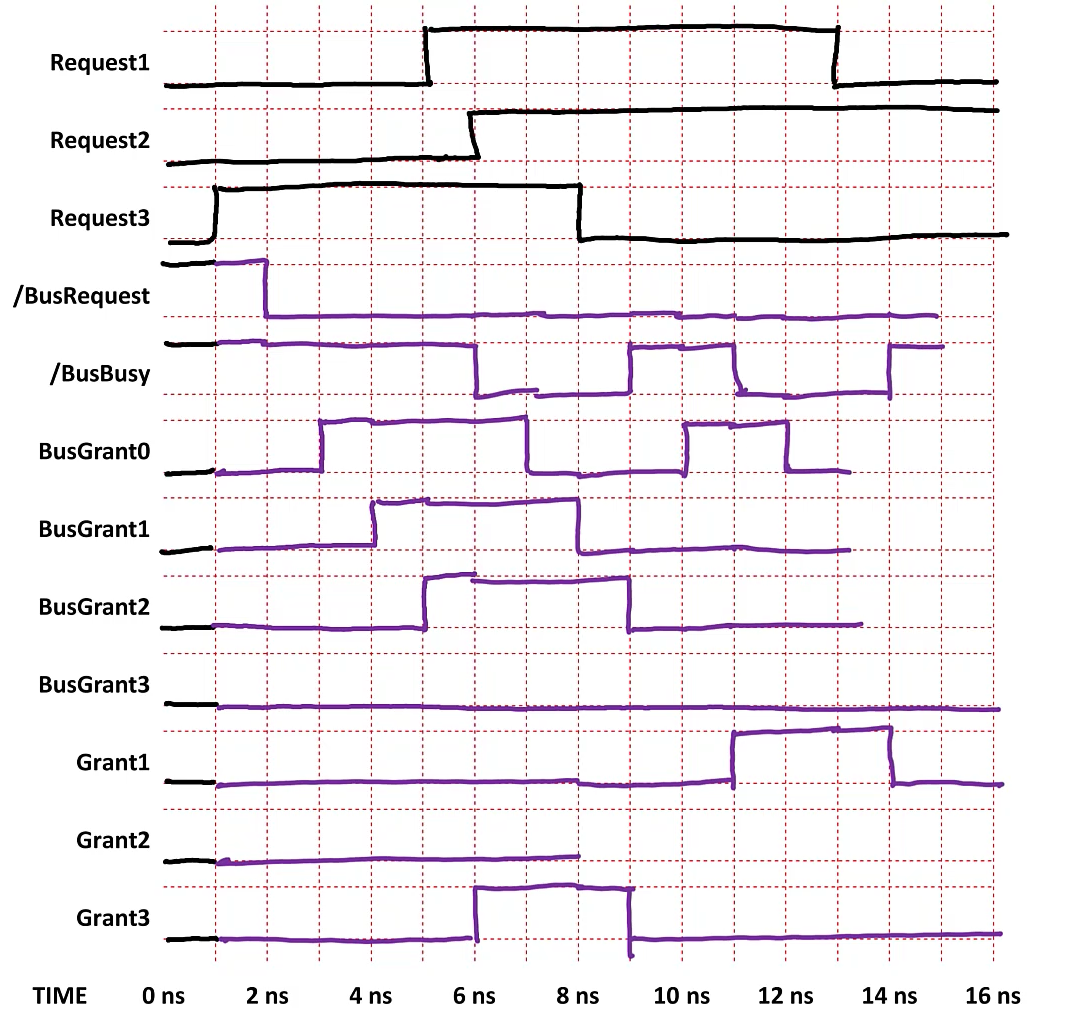
At this point, the central arbiter once again sees that the bus is not busy, since /BusBusy is high, and that there is a request being made (BusRequest is low because of Request2). It issues a token by asserting BusGrant0; Device 1 sees this grant but does not have an active request so it passes it on to Device 2 by asserting BusGrant1.
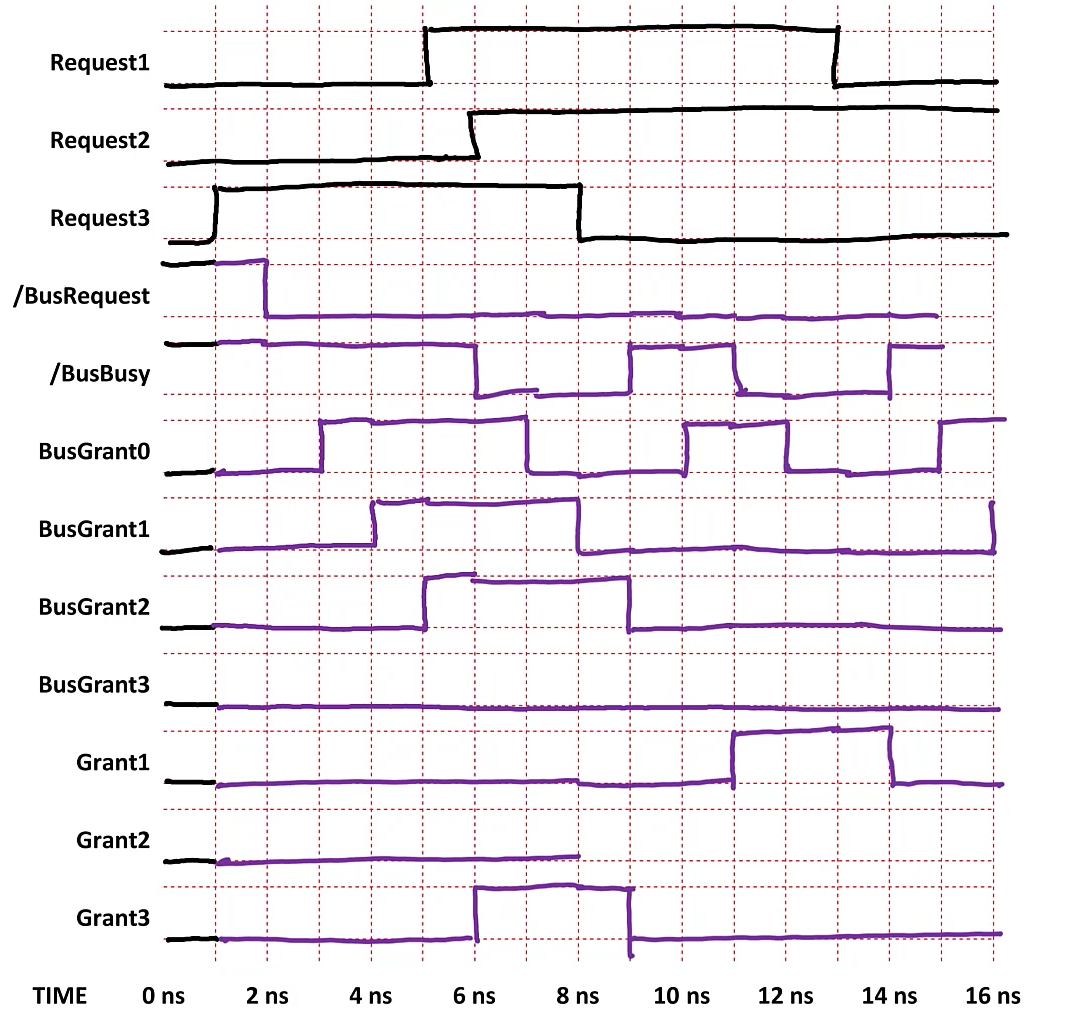
We have reached the end of the time period. We can fill in the outstanding signals so that they reach the end of the time period.
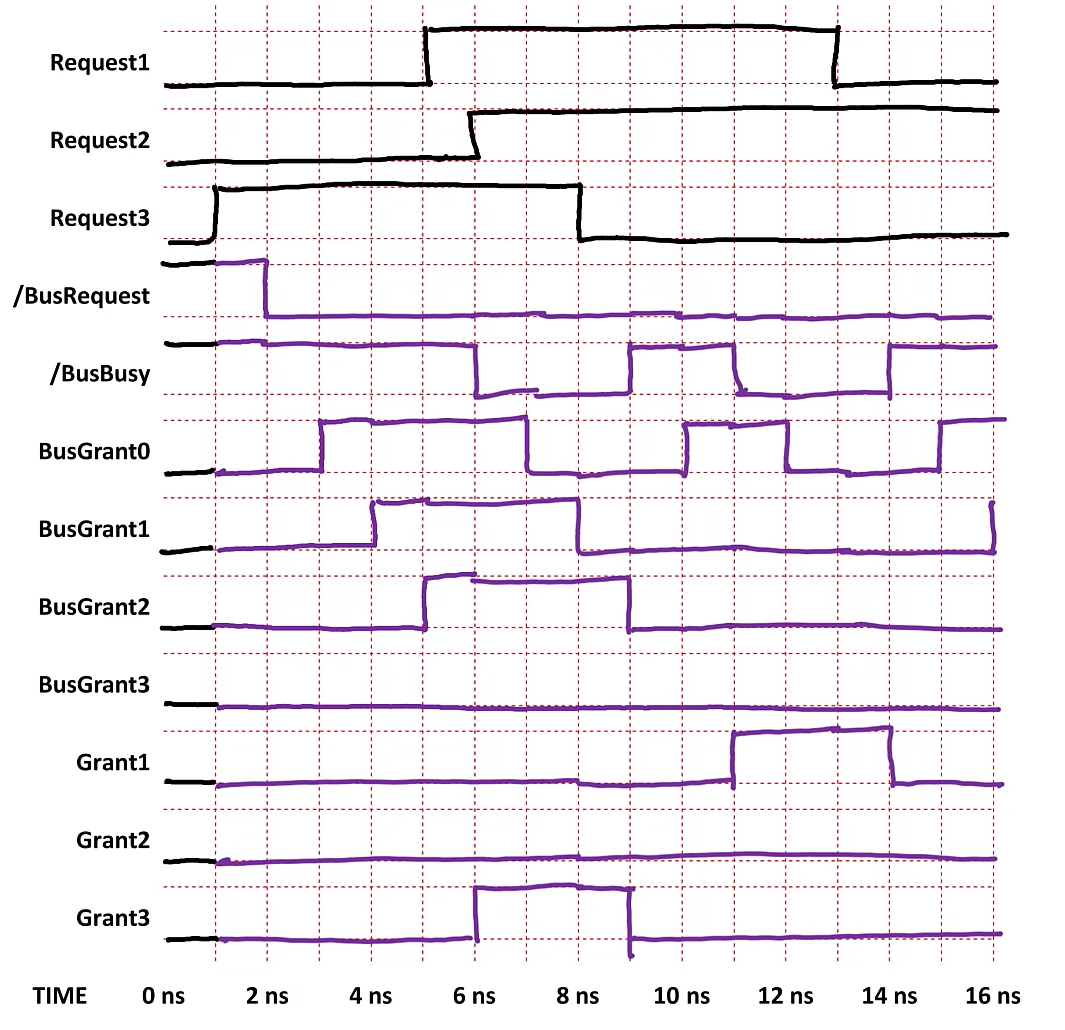
We should note that there is a case of priority uncertainty here – a higher priority device makes a request while the bus is not busy, but does not end up as bus master. At the highlighted point below, Device 1 made a request while the bus was not busy; however, Device 3 gets control of the bus, because the token had already propagated past Device 1 (BusGrant1, which is issued by Device 1, was already high at this time).
